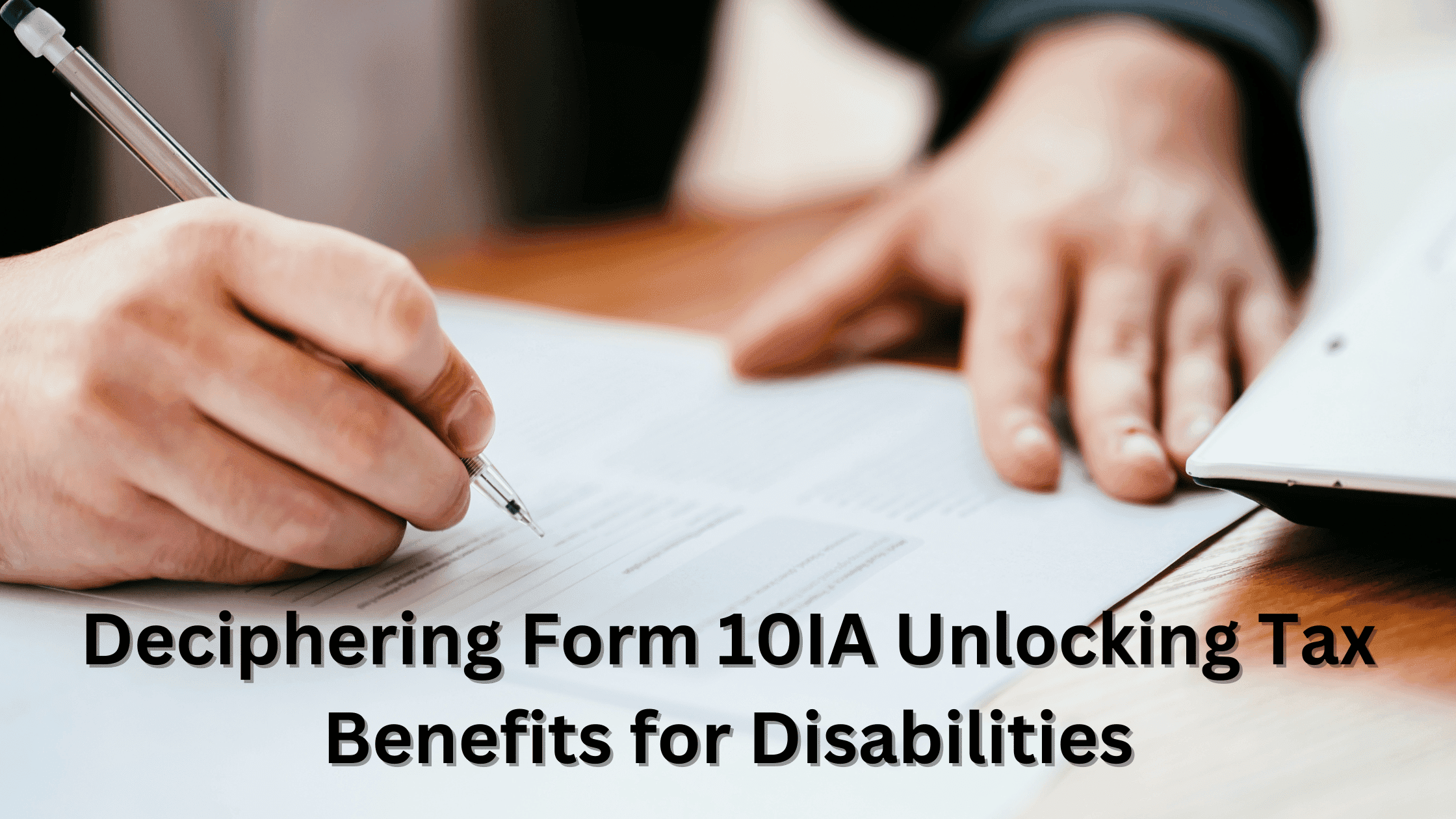Form 10IA is a certificate issued by a recognized medical professional to certify an individual as a person with a disability, severe disability, autism, cerebral palsy, or multiple disabilities. This certificate is crucial for claiming deductions under Sections 80DD and 80U of the Income Tax Act, of 1961.
What’s Form 10IA All About?
This form is an official document which
- Confirms that the individual has one of the specified disabilities.
- Indicates if the condition is progressive, non-progressive, likely to improve, or not likely to improve.
- Recommends if a reassessment is needed and when it should happen.
Who Needs to File Form 10IA?
The form should be submitted by
- Family Members Supporting a Dependent* with Disabilities (u/s 80DD)
- Persons with Disabilities (u/s 80U)
Dependent can be a spouse, children, parents, brothers, or sisters of the taxpayer in the case of an individual, and any member of the family in the case of HUF.
Sections of the Income Tax Act, 1961 which you Should Know About
Section 80DD
This section allows a deduction for the expenses incurred on the medical treatment (including nursing), training, and rehabilitation of a dependent with a disability. The deduction also covers the amount deposited under a scheme for the maintenance of the dependent with a disability.
Section 80U
This section provides a deduction directly to individuals with a disability. The amount of deduction is specified based on the type and severity of the disability.
Conditions and Deductions
Under Sections 80DD and 80U of the Income Tax Act, 1961, deductions are available to individuals based on their disability severity.
Section 80DD Individuals in support of dependents with disabilities can avail of deductions
- For a disability between 40% and less than 80%, amounting to ₹75,000
- For severe disabilities of 80% and more, the deduction increases to ₹1,25,000.
Section 80U individuals with disabilities themselves can claim deductions
- For a disability between 40% and less than 80%, amounting to ₹75,000
- For severe disabilities of 80% and more, the deduction increases to ₹1,25,000.
This system of deductions, both to the caregivers and persons with disabilities, is a mode of financial relief, keeping in mind the different needs and challenges they face.
Form 10IA Essentials
- Certificate Number and Date: Unique ID for the certificate and the date of issuance.
- Personal Information: Includes the name, gender, age, and address of the person with the disability.
- Registration Details: Registration number (at the hospital) of the patient being certified.
- Disability Details: Specifies the type of disability (autism, cerebral palsy, multiple disabilities) and its severity (disability or severe disability).
- Condition Status: Indicates if the condition is progressive, non-progressive, likely to improve, or not likely to improve.
- Reassessment: States if a reassessment is recommended and the period after which it should be done.
- Patient’s Signature/Thumb Impression: Confirmation from the patient.
Certification Requirement
Form 10IA must be certified by a medical authority. This includes a neurologist with a Doctor of Medicine (MD) degree in Neurology, or a Civil Surgeon, or Chief Medical Officer (CMO) in a government hospital.
Importance of Form 10IA
The form plays a very important role in claiming tax benefits for disabled persons under Sections 80DD and 80U of the Income Tax Act, 1961. This form, certified by a recognized medical professional, is required for validating the disability status and its severity for the purpose of claiming deductions. It acts as an official confirmation of the disability type, its progression, and the need for reassessment.
For persons supporting dependents with disabilities, Form 10IA is an indispensable document, as it enables him or her to claim deductions on account of expenditure incurred for medical treatment, training, and rehabilitation. Individuals with disabilities can avail deductions according to their level of disability which they are suffering from. Sections 80DD and 80U provide specific deductions based on the level of disability, thus providing financial relief to people in need.
In essence, Form 10IA acts as a gateway to important tax benefits, recognizing and supporting persons with disabilities and their caregivers.
Disclaimer:
The information provided in this content is for general informational purposes only. You should always seek the advice of an expert before making any decisions based on the information provided. We do not warrant or guarantee the accuracy, completeness, or usefulness of the information provided. Any reliance you place on such information is strictly at your own risk. We are not responsible for any damages, losses, or expenses related to the use of this content.
Related Blog :
PRESUMPTIVE SCHEME UNDER SECTION 44AD INCOME TAX ACT
SECTION 194R TDS ON BENEFIT OR PERQUISITE IN RESPECT OF BUSINESS








